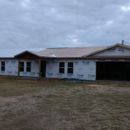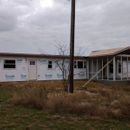Exterior wall polyiso worth it?
I live in central Texas and I’m debating whether adding 3/4″ Polyiso to the outside of my exterior walls. would be worth the cost. I originally planned on it, but since my wife and I are doing the majority of the work, it has come down to just not having the time (we both work full time jobs, plus a bit more), and the initial cost of it.
The polyiso I have been considering is the R-Max R5 3/4″ Polyiso. It is $14.95 a sheet at the local hardware store. I need at least 71 sheets of it, which comes out to a little over $1050. I would then need to tape the seams and seal everything in. My walls are currently taped at the seams and I have the Tyvek housewrap applied all around. I will be doing open cell spray foam on the underside of the roof, as well as the walls (though I’m considering dense pack cellulose as well). I did install 3 inches of polyiso on the roof since I got a heck of a deal on it and I didn’t think it would take a long time to install (entire roof took 2 months, and my roofer is still installing metal). I am already planning to install a rainscreen since I purchased galvanized rainscreen material already (not to mention the many benefits it brings to the construction of the house).
My issue at this point is that it would add to the cost of the house (building the house with cash) and it would add, what I assume would be, an extended amount of time. I am hoping that someone will give me a pretty one sided answer so I can just go that route, but with all of the research I’m doing, I keep swaying back and forth.
What are your thoughts?
GBA Detail Library
A collection of one thousand construction details organized by climate and house part











Replies
What is "worth it" depends on your goals. Are you looking for some sort of "pay-back" on energy cost savings, higher comfort, higher moisture reslience, meeting some performance standard, all of the above, or something else entirely?
From a thermal performance perspective, 2x4 framed house with continuous R5 on the exterior and decent quality fiber in the stud bays comes in at about R15 whole-wall after accounting for the thermal bridging of the framing and the insulating qualities of the wallboard, siding, air films, etc. Foil faced polyiso with an 1" air gap on one side (not in contact with metal mesh type rainscreen) adds about R1 to the stackup. It is also a vapor barrier, which protects the wall assemblies from sometimes intense exterior humidity from condensing inside the wall cavities in an air conditioned building.
A 2x6 framed house with decent fiber in the cavities also comes in at about R15.
Making the house air tight by caulking the framing to the sheathing may be more important than another R5 in a US climate zone 2 climate. Where are you, exactly?
Jacob - we're also in Central Texas (Zone 3) & evaluating whether adding R-Max R5 3/4" Polyiso is worth it. We've hired a contractor do the work, however we've very involved in the decision process.
We started with an incredibly leaky existing 1-story structure with minimal insulation, poor quality siding, ugly single-pane windows & a failing over-sized HVAC. So far we've spray-foamed under the house and in the attic; resized HVAC being installed this week. We're planning to remove the siding, replace the windows, insulate/seal the cavities, sheath (likely Zip), furring strips + reside the house. The question at the moment is whether to add the polyiso...
Our current thinking: quotes for BIBs are coming in notably less than spray foam, so we're thinking the most cost-effective approach would be to use BIBs in the cavity but then add 3/4" of Polyiso to the wall assembly. Maybe that is also a more cost-effective approach for you?
Dana,
That is a really good question. If I could start all over (after reading everything), my goal would be to be as close to passivhaus standards as possible. As of right now, that is impossible, so I'm just trying to do everything I can to have an energy efficient home. I know that is a broad statement, but since I'm building this mostly myself, I'm just kind of picking certain things to implement that fit the budget. The extra $1500 (just rounding now) that it would cost for the extra R5 isn't a huge hit on the budget, but if the thoughts are that I won't see a return in cost or comfort for twenty years, I assume that it is not worth it.
I will say that I do have 2x4 exterior walls with OSB sheathing that is taped at the seams and caulked at the sill and top plates. I have done everything I can with air sealing that I know how including using Quickflash products on all penetrations. If this is going to help with the air tightness, that might be worth it in itself.
I am located in China Spring, TX (30 miles north of Waco, TX).
Robert,
I have considered the BIBs but I have not found anyone locally (in Waco) that does it. My only concern with BIBs is what the cost would be for me. The house we are building was an existing structure (previous owner started building the house, had exterior walls and trusses installed) and we had to reframe a lot of the outside to fit new window and door locations. With the new framing, I have a lot more studs than a standard 16" OC wall. Also, because of this, I'm thinking the extra Polyiso on the exterior would help with the thermal bridging between the studs and the exterior.
So now I'm back to thinking this would be a benefit and should be done....
Jacob. Have you completed a Manual J on the structure? That would help you to evaluate the ROI for installing the exterior foam. You may discover that the payback (smaller HVAC and lower utilities) is well worth the investment.
@Robert.
Price out ZIP-R (R3 or R6). The ease of construction for your contractor might make it worth it over the typical OSB/WRB/Exterior Foam approach.
Being in CZ3 any amount of exterior foam would be beneficial.
For wall cavities you can use dense pack fiberglass or batts and forget the spray foam.
Here's a link to a build in CZ3 (Atlanta). https://www.greenbuildingadvisor.com/blogs/dept/green-building-curmudgeon/topping-out
Jacob - I design high-performing, zero energy homes in DFW. All of my homes have 1/2" R3 or 1" R5 taped and sealed rigid foam on the outside of the wall assembly. The sheathing is also taped and sealed. We install regular Plwd/OSB and an approved tape/foam combo to use as moisture barrier, saving the expense of ZIP boards.
We use dense packed and rolled cellulose on the walls @ 4 lbs. per cubic foot. I found to be the best combo here in TX.
We also install 1.5" R10 rigid foam on top of the roof decking and 8" R28 min. open cell foam under the decking when installing metal roof. 3" is awesome. Always have R38 min. in CZ3.
I think you are on the right track.
Steve,
I have not done a Manual J on the house. I did already have the HVAC system installed by a company I've used before. He already stepped the sizing down to account for the insulation I had told him about.
Armando,
Thanks for the info. I like the idea of the R5 rigid with the dense pack cellulose on the inside. Do you build homes incorporating solar and other energy saving devices to create net zero homes?
Also, my rainscreen material is 1/2" thick. With the foil faced polyiso, will I still see the effects of the radiant barrier?
China Spring is in McLennan county, still inside US climate zone 2A, but on the cooler edge, close to but not abutting zone 3. A 2x4/R13 wall would meet IRC code minimum for zone 2, but in zone 3 it's now R13 + R5 continuous insulation.
Given that you are on the cooler edge of zone 2 it's probably going to be "worth it" to go for at least zone 3's code minimums. That's nowhere near PassiveHouse, but it's possible to hit Net Zero Energy with that wall if you go for higher performance everywhere else too. See the zone two row of Table 2 on page 10 of this document:
https://buildingscience.com/sites/default/files/migrate/pdf/BA-1005_High%20R-Value_Walls_Case_Study.pdf
Those are "whole-assembly" numbers, with all the thermal bridging factored in, and the R values of the sheathing/siding/wallboard all factored in. A typical 2x4 wall comes in at about R10. Adding the R5 polyiso to it brings it up to the R15 range indicated in the table.
I say "Go for it!" , add the R5 polyiso and don't look back, but keep looking at that other stuff too!
Take a good look a the rest of that row, see what's still do-able and what isn't. With an optimal roof orientation you can probably still hit Net Zero Energy with a solar array that still fits on the house.
Dana,
I actually live on the far far north side of China Spring, in Bosque County, which is the highest zone 2 there is, so I'll go with the zone 3 specs like you suggested. When I install the foam, what tape do I use for the seams? I would have thought foil tape would be ideal to keep the radiant barrier continuous, but I'm reading that regular sheathing tape is sufficient.
Surprisingly I'll be good on all of the values you posted (with the R5 exterior foam on the walls) except for the slab. I honestly wasn't even considering the slab as something needing insulation. I will have about 4-6 inches of slab exposed and I will be doing stained concrete for most of the flooring, so I'm wondering if this is something I should be looking further into. What are my options for this?
I do plan to add solar to the roof in the future (but I'm on a coop with very very affordable electrical costs) so that has been planned and will hopefully be a bit cheaper in the future.
Thanks again for all of the help!
Use 3M All Weather tape. 1.75" size is fine. Buy it on Amazon. Look it up. I used it along with several other I experimented with and hand down it was the best.